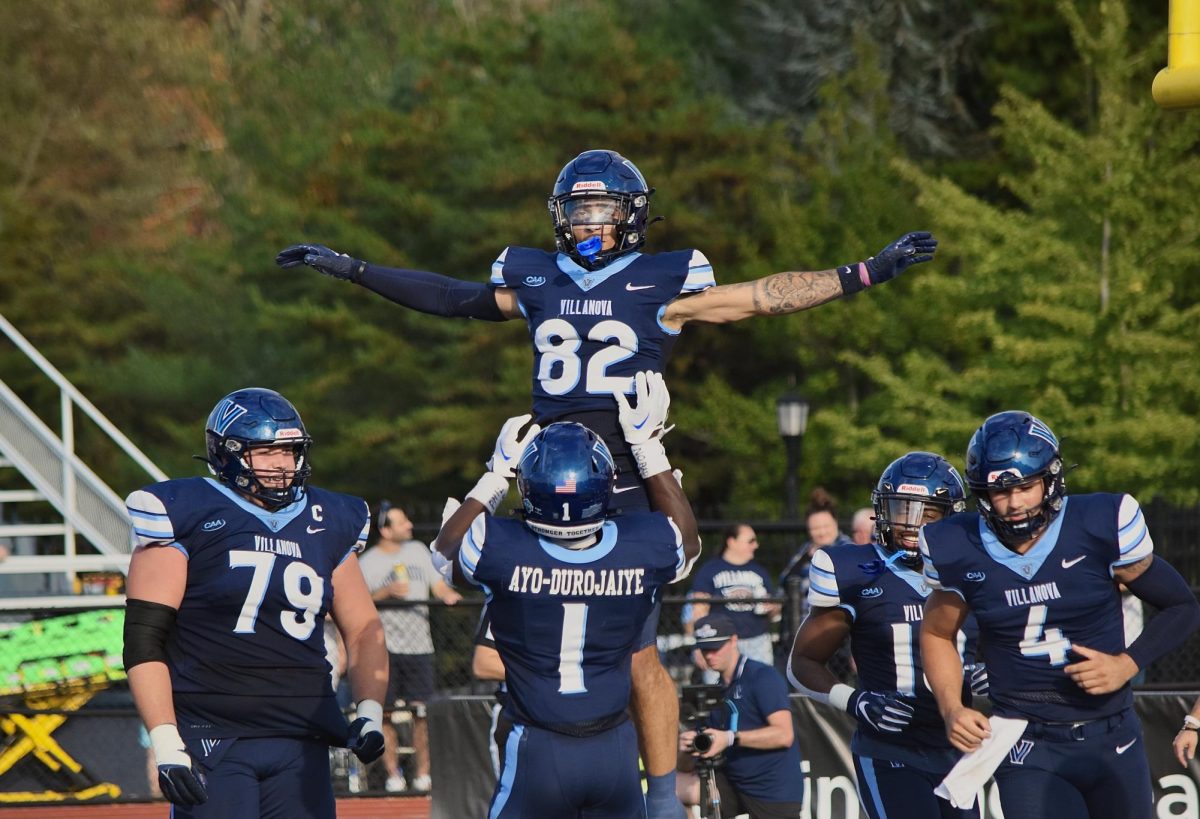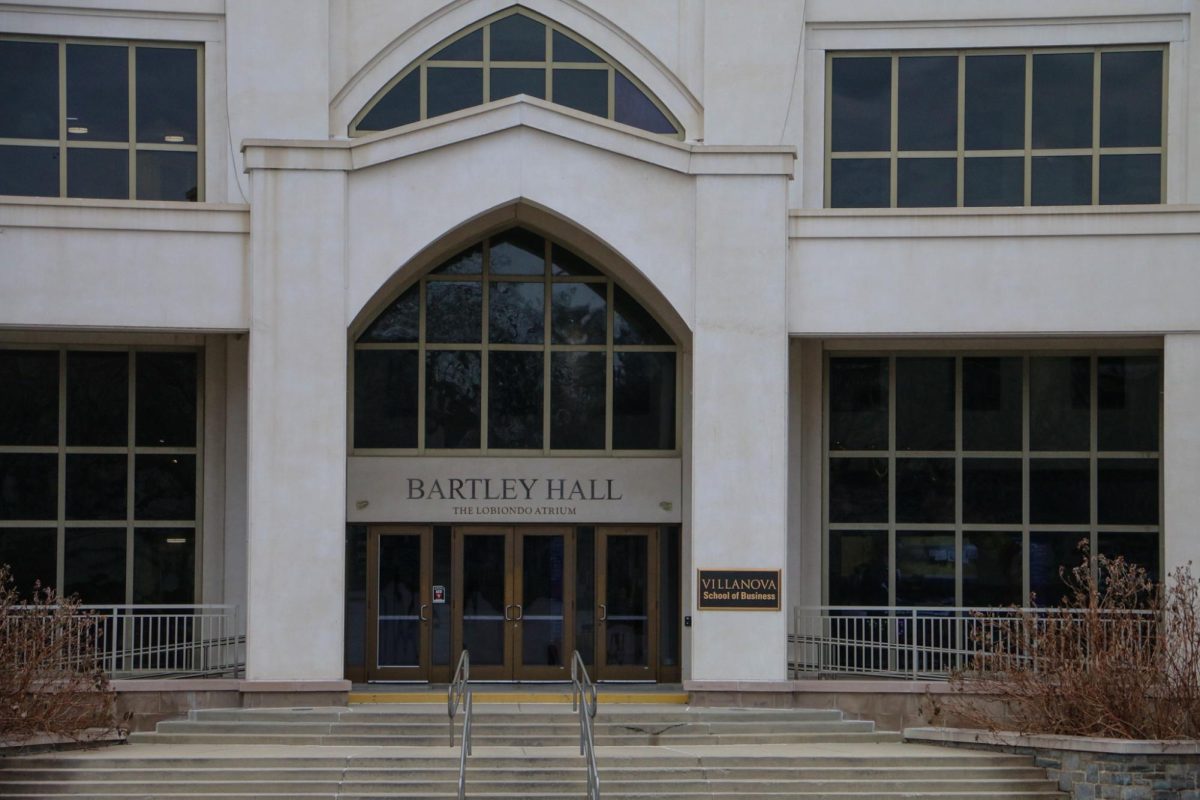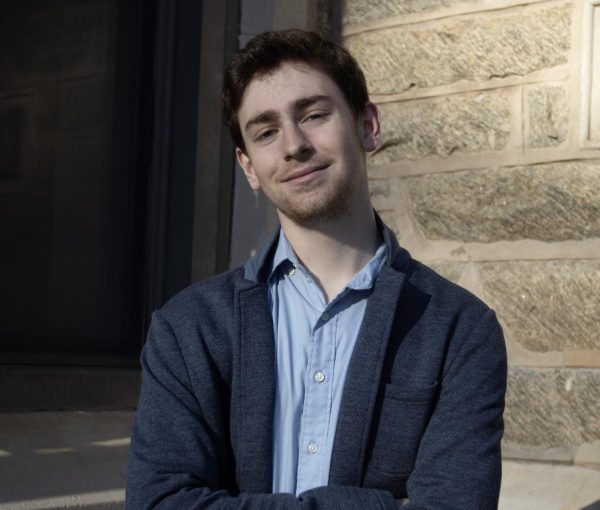As is commonplace on the campus of Villanova, or at least since 1993, Villanova’s football team will host its 31st annual Bone Marrow Registry Drive on April 17 in the Connelly Center’s Villanova Room, from 10 a.m. to 3 p.m. It is an event started by legendary Villanova football coach Andy Talley.
For Talley, and his titular foundation, the Andy Talley Bone Marrow Foundation, this has been an event that has grown year after year after year. That is not simply hyperbole either, as Talley said that last year marked a record 50,000 young people put on the donor list, after hitting 40,000 at the 2022 event.
“We’re at the point now where nobody in the world does what I do, because I have the power of college football, so I can call a college coach and now all of a sudden, I got 100 players from that coach’s team doing a drive at their school,” Talley said. “And so, we continue to get involved with college football teams and the NMD, [the] National Marrow Donor Program.”
Talley (who served as the Wildcats’ head coach for 36 seasons, winning a school-record 229 games and a national championship in 2009) first found out about the great life-saving potential such a program could have in the most unlikely of places, his car on the way to work in 1993. But for the now-81-year-old Villanova legend, he’s glad he did.
“I was driving to work for one of the morning practices at about 6:30 in the morning, and an oncologist came on [the radio], and said that at that time, there were only a million people on the bone marrow donor list and people were dying constantly, because we had no donors,” Talley said. “And I went like, ‘Oh my gosh, I think I can do something about this.’ You know, I’ve got 100 healthy football players and I know a lot of coaches and maybe I can be helpful. Just one of those things coming out of the blue [and] so then I said, ‘Well, we’re going to have our first drive.’”
Since that first drive, the event’s grown in importance, stature and life-changing impact, partnering with the “Be The Match” organization in 2008 to create the “Get in the Game. Save a Life” initiative, partnering 165 college football programs together and an initiative that has lived on to today. And in the process, since that merger 16 years ago, “Get in the Game” has registered over 159,000 donors, resulting in 880 transplants, according to the Talley Foundation website.
While the annual drive started with Talley, who retired in 2016 as head coach, it has persisted under current Villanova coach and longtime Talley assistant, Mark Ferrante. But for Ferrante, his involvement with the program is involvement that personally cuts deep for the 62-year-old and drove him to make sure it continued to go on, even after Talley’s retirement.
“I had a younger brother who passed away from leukemia when I was two years old. He was five months old,” Ferrante said. “So, when Coach Talley would ask people, and when he started [the drive] ask our team, raise your hand if you have any, know of anyone or have any family members that have been afflicted with any type of cancer, [and] obviously my hand would go up. It’s just something that hits home, unfortunately, with too many people.”
This is a story that certainly is not unique for just Ferrante and his family, but one similar to many by countless people who have participated over the years. Luckily, things have changed in the past three decades, with the process evolving from blood draw, which saw some turned off to the idea, to now the cheek swab, which in Talley’s purview, has allowed for many, many more people to get involved, even from the football teams over the years.
“They take a Q-tip running across your tongue, put it on a slide, and now they have your DNA, so if they’re ever called, the bone marrow family has your DNA and they can match it,” Talley said of the process’s evolution. “In [the old] days, they would draw blood, a needle in the arm and [well], if you wanted to see eight or nine big Villanova football players keel over, that’s what the first bone marrow drive looked like.”
And in Ferrante’s experience with the program since its inception, he’s seen a recurring theme. One-hundred percent of matches on the teams he’s coached will do it, be it in-season or during the offseason, and when he’s asked them if they’ve had regrets about doing it, all have said they’d do it again 100 out of 100 times. For the current coach, one match in particular stands out: Matt Szczur, a World Series Champion with the Chicago Cubs and two-sport Villanova legend who won MVP honors in that 2009 championship game. However, that last accomplishment almost never happened.
“We’ve had some of our guys miss games, we’ve had Matt Szczur [in] our 2009 national championship season [be a 1-in-80,000] match for a little girl in Ukraine, and if she was ready to receive the marrow, to have the transplant, Matt would have missed our playoff run and [missed] our national championship game,” Ferrante said, recalling the events of 15 years ago. “She wasn’t ready, Matt was able to play, […] and then, he didn’t get called [upon] until the springtime to do the transplant, and he actually missed a handful of his baseball games.”
Szczur, who missed 10 games due to medication in advance of donating, memorably hit a home run in his first at-bat back post-donation, a memory fond in Ferrante’s memory. But even fonder was his willingness to sacrifice playing to help save a life and grasping the reality that this donation was bigger than any game.
That spirit has been a fixture of the program from the beginning, with it being a big part of the promotion of it to the wider Villanova community, including for this year’s student coordinator, Meghan Harris.
“Having the opportunity to participate and be the student leader for this event has been nothing short of wonderful and inspiring,” Harris said. “This event gave me the chance to interview a peer and her husband who actually received a bone marrow donation many years ago [and] I learned so much in a very short time frame about his story and the process of how his life was changed from the very thing we are doing here at Villanova. By [getting] your cheek swabbed, you are allowing another patient somewhere in the US a chance at finding a bone marrow match needed to save their life. [And] if you get the call and want to help save a life, you will forever be changing the life not only for your match, but their families as well.”
For all three, the event may hold different meanings personally, but the message to the wider Villanova community is clear. Anyone has the potential within themselves to save a life. And Talley has seen hundreds and hundreds of lives saved through that first event in 1993 and everything that followed since.
“First thing we say to [people] is you can be a lifesaver, [and] anybody who’s got any moxie in them would think, ‘Hey, I’d like to save someone’s life if needed,’” Talley said. “Chances are, you’ll never be called to save someone’s life, but every now and then, our people from our drives get called to save a life. I just had eight people today from different universities that were called to save a life and did. So, that’s kind of the [good part] of the deal.”








